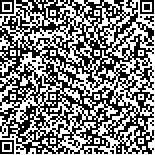| 摘要: |
| 表面肌电信号(Surface Electromyography,sEMG)是通过相应肌群表面的传感器记录下来的一维时间序列非平稳生物电信号,不但反映了神经肌肉系统活动,对于反映相应动作肢体活动信息同样重要。而模式识别是肌电应用领域的基础和关键。为了在应用基于表面肌电信号模式识别中选取合适算法,本文拟对基于表面肌电信号的人体动作识别算法进行回顾分析,主要包括模糊模式识别算法、线性判别分析算法、人工神经网络算法和支持向量机算法。模糊模式识别能自适应提取模糊规则,对初始化规则不敏感,适合处理sEMG这样具有严格不重复的生物电信号;线性判别分析对数据进行降维,计算简单,但不适合大数据;人工神经网络可以同时描述训练样本输入输出的线性关系和非线性映射关系,可以解决复杂的分类问题,学习能力强;支持向量机处理小样本、非线性的高维数据优势明显,计算速度快。比较各方法的优缺点,为今后处理此类问题模式识别算法选取提供了参考和依据。 |
| 关键词: 表面肌电信号 模糊模式识别 线性判别分析 人工神经网络 支持向量机 |
| DOI:10.3969/j.issn.1672-5565.201708005 |
| 分类号:R318.04 |
| 文献标识码:A |
| 基金项目:上海市科学技术委员会科研计划项目(15441906200). |
|
| Research on human body motion recognition algorithm based on surface EMG signal |
|
XIAO Kai, ZOU Renling
|
|
(School of Medical Instrument and Food Engineering, University of Shanghai for Science and Technology, Shanghai 200093, China)
|
| Abstract: |
| The surface EMG signal is a one-dimensional time series of non-stationary bioelectrical signals recorded by the sensor on the surface of the corresponding muscle. It not only reflects the neuromuscular system activity, but also is important for reflecting the corresponding action limb activity information. In terms of EMG applications, pattern recognition is the very basis and key. In order to select the appropriate algorithm based on surface EMG pattern recognition, this paper reviewed and analyzed body motion recognition algorithm based on surface EMG signal, which included fuzzy pattern recognition algorithm, linear discriminant analysis algorithm, artificial neural network algorithm, and support vector machine algorithm. Fuzzy pattern recognition can be used to extract the fuzzy rules, which is insensitive to the initialization rules and is suitable for processing rigorous, non-repetitive bioelectrical signals like sEMG. The linear discriminant analysis reduces the data dimension and its calculation process is simple, but this method is not suitable for large data. With strong learning ability, the artificial neural network can describe the linear relationship between the input and output of the training sample and the nonlinear mapping relationship, which can be used to solve complex classification problem. Support vector machine is obviously advantageous in processing small sample and nonlinear high-dimensional data with high-speed calculation. The advantages and disadvantages of each method were compared in this paper, which provides a reference and basis for the selection of pattern recognition algorithms. |
| Key words: Surface electromyography Fuzzy pattern recognition Linear discriminant analysis Artificial neural networks Support vector machine |






